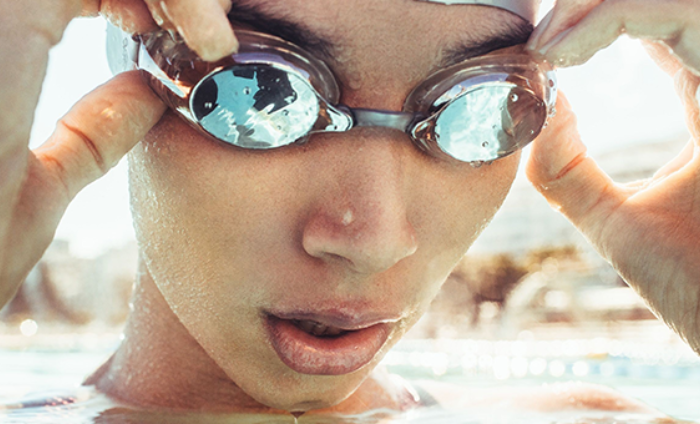
How to choose prescription goggles
Simon Griffiths learns about goggle prescriptions and why you shouldn’t swim in contact lenses
As a glasses wearer, I had long been frustrated by poor vision while swimming. At the pool, I struggled to see the pace clock or instructions written by coaches on white boards. In open water, I’d mistake people’s swimming hats for course marker buoys and miss out on interesting things to see around me. Prescription swimming goggles changed all of that and I recommend them to anyone who struggles with the same problems. There is now a wide range of prescription goggles on the market to cater for most preferences and finding the right pair is fairly straightforward. However, there are a few things to take into account, so I asked James Sutton for advice.
How to know what prescription to buy
A spectacle prescription is usually written in the following form: sphere (or sph) / cylinder (or cyl) x axis. Usually the right eye is written first followed by the left, either one above the other or side by side:
R -3.00 / -0.50 x 180 L -3.50 / -1.00 x 2
or
R -3.00 / -0.50 x 180 and then L -3.50 / -1.00 x 2
The sphere (or sph) is the main part of your prescription and will be ‘-’ for short-sightedness (myopia) and ‘+’ for longsightedness (hypermetropia). The cylinder (or cyl) is the secondary part of your prescription and refers to the amount of astigmatism you have.
Off-the-shelf prescription goggles only correct for distance, not astigmatism, so in order to calculate the power for your goggles, you need to take into account the two aspects of your spectacles’ prescription.
You should base the power for your goggles primarily on the amount of short or long sightedness you have. If you also have a moderate degree of astigmatism (up to 2.00), incorporate up to half of this to choose the most appropriate power. Most swimming goggles come in 0.50 or 1.00 steps so you may have to select the nearest power. Here are some examples:
- -3.00/-1.00×90 – the best power would be -3.50 (-3.00 plus half of -1.00 so -3.00 plus -0.50)
- -3.00/+1.00×90 – the best power would be -2.50 (-3.00 plus half of +1.00 so -3.00 plus +0.50)
- +3.00/-1.00×90 – the best power would be +2.50 (+3.00 plus half of -1.00 so +3.00 plus -0.50)
- +3.00/+1.00×90 – the best power would be +3.50 (+3.00 plus half of +1.00 so +3.00 plus +0.50
Unless you have a very basic prescription, most swimming goggles will not provide the same level of vision as your glasses or contact lenses. However, they will provide adequate vision for while swimming.
What if I my astigmatism is more than 2.00?
None of the ‘off the shelf’ goggles correct astigmatism so if the majority of your prescription is astigmatism, or you have astigmatism over 2.00 dioptres, you will need a custom made product for best visual results.
What if my normal glasses are bi-focal or vari-focal?
Swimming goggles only correct for the distance but this is not usually an issue in the water. If seeing up close is important to you (if you want to see a lap watch perhaps) then it could be possible to buy a pair with a reading power in one eye and distance in the other.
What extra considerations do I need to take into account for open water swimming?
Ensure you have good fitting goggles as some open water locations can contain a variety of microbes that are less likely to be a problem in pools. A tint or mirrored finish to the goggles may also be beneficial if you are hoping for a sunny swim. Some swimmers prefer models that offer a wider view, while others like the comfort of swim masks.
Why not just wear contact lenses under normal goggles?
Wearing contact lenses under swimming goggles is not recommended because the chances of getting an acanthamoeba infection are greatly increased. Acanthamoeba is a waterborne microbe that is all around us, but when combined with contact lens wear and the weakening to the cornea in chlorinated water, the risks go up. Treatment for acanthamoeba involves using medical eye drops every hour, day and night, for a few days with the frequency between drops gradually decreasing over the first few weeks. Treatment usually has to continue for at least a year. Even with successful treatment permanent and debilitating visual lose can still occur.
James Sutton is a practising optometrist with over 20 years of experience as a high street optician. He also runs prescriptionswimming-goggles.co.uk and advises on a range of optical matters including prescription swimming goggles and diving masks. Find out more at www.prescription-swimminggoggl…








